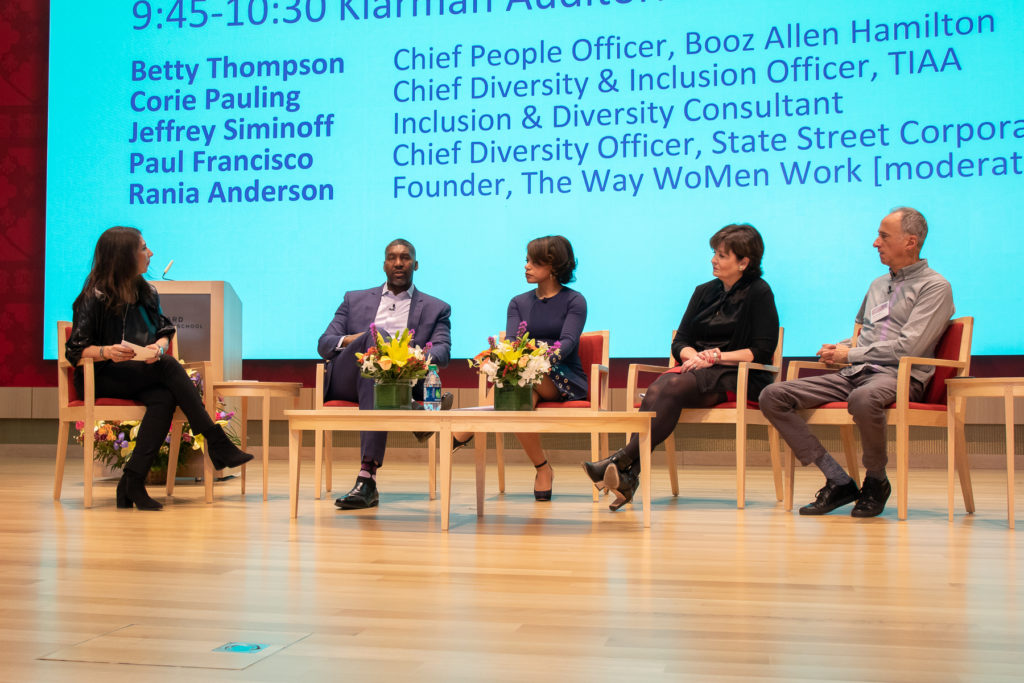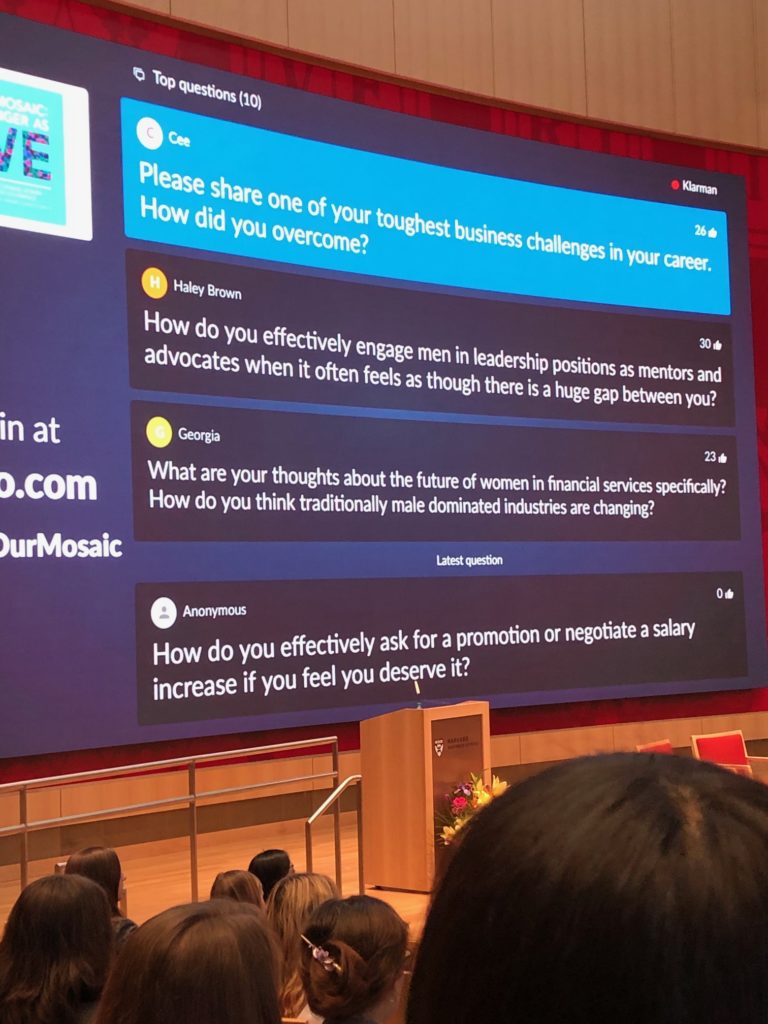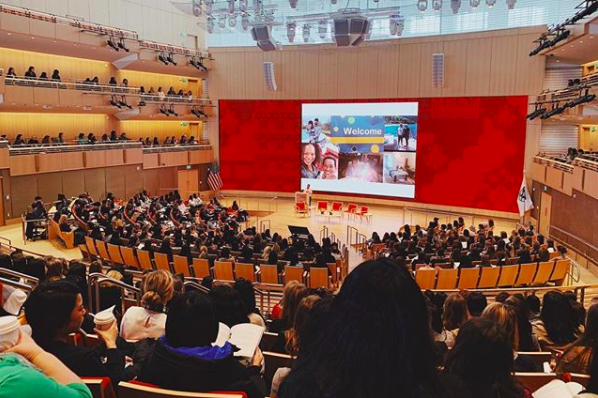How Can We Engage More Men? Questions from Harvard Business School’s Dynamic Women in Business Conference

I did not anticipate the top questions women wanted answers to when I moderated a panel on Advocating for Diversity and Inclusion at Harvard Business School’s Dynamic Women in Business Conference. The panelists: Betty Thompson, Chief People Officer at Booz Allen Hamilton; Jeffrey Siminoff, Inclusion & Diversity Consultant, Former Head of I&D at Morgan Stanley, Stripe, Apple and Twitter; Corie Pauling, Chief Diversity and Inclusion Officer at TIAA; and Paul Francisco, Chief Diversity Officer at State Street Corporation, explored complex, nuanced topics and shared valuable experiences and insights. It was a lively discussion, not one of those round robin question-and-answer sessions.
We engaged the primarily female audience of approximately 1200 people through an app called Sli.do, which allows people to pose questions that are visible to all attendees and speakers. In real time, the audience is able to upvote or favorite questions that are most important to them.

Many of the most upvoted questions were about how they could engage more men. A few examples:
- How do you effectively engage men in leadership positions as mentors and advocates when it often feels as though there is a huge gap between you?
- How do you engage with other men who don’t consider gender diversity & inclusion to be a strong issue?
- With the increased emphasis on diversity, many men feel disenfranchised. While not statistically true, it poses a new barrier to inclusive dialogue. Please address.
- You mention that we need to engage men and explain “what’s in it for them”. What IS in it for them when much of this is about giving “their spots” to others?

Men, I’d love to hear directly from you. What would be the best way to positively engage you as allies and advocates for women and gender-balance? Reach me here or via Twitter.
Here’s what I’ve seen work best when it comes to engaging men.
First, begin from a place of empathy, not frustration. Then:
- Ask men you know how they feel about the advancement of women and how they’d like to be engaged. Listen deeply and try to understand before you begin to explain your perspective. Incorporate the feelings they convey when talking with other men.
 Share examples of men who are supportive and engaged. Instead of talking primarily about negative or sexist incidents, look for positive examples and share them with your male co-workers. As the saying goes, “You can’t be what you can’t see.” Men need examples of what to do more You can find several examples, here.
Share examples of men who are supportive and engaged. Instead of talking primarily about negative or sexist incidents, look for positive examples and share them with your male co-workers. As the saying goes, “You can’t be what you can’t see.” Men need examples of what to do more You can find several examples, here.- Know and be able to share the business case for gender balance and diversity. Connect the business case directly to your company’s strategy. For example, if your company wants to increase its customer base of millennial women (as is the case with a prospective client of mine) it will be able to better understand this market segment if its employee and leaders also represent this demographic.
- Buy them a copy or recommend that they read these books:
-
- And of course, WE: Men, Women and the Decisive Formula for Winning at Work
- Talk to men about their daughter’s, wife, and/or mother’s experiences in the workplace. Ask them what they hear from their family members and what they wish men and co-workers would do to create a level playing-field.
- Ask a current male ally to reach out to male colleagues and share his experiences.
- Ask your company’s leadership team, HR and/or diversity leaders to deliver specific programing for men, managers and leaders on how to be an ally and advocate and how to intentionally engage with women to achieve gender-balance and parity.
Specifically regarding the question about “what’s in it for men”:
- Don’t frame your ask in terms of “helping women.” Instead, talk about how people who achieve entrepreneurial success or career advancement, think strategically about the talents of others, especially people unlike themselves. If a man (or anyone) thinks that excluding others, means less competition and opportunity for themselves, they will ultimately be proven wrong. A team without complementary skills and perspectives will not be a winning team and thus opportunities for him and everyone else will be more limited.
- When men (anyone) work optimally with diverse teammates, both they and their teammates innovate, make better decisions, and achieve more success. What’s in it for men is the recognition of being as a strategic team player and leader and ultimately the opportunity to increase opportunities for everyone, themselves included, to get more business, and accelerate their own success.
Most men want to be a part of the solution. Invite them in and show them how.